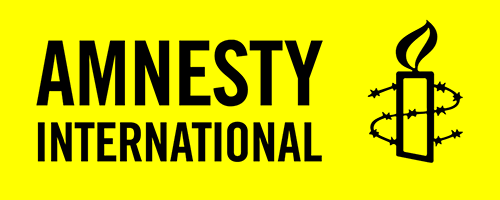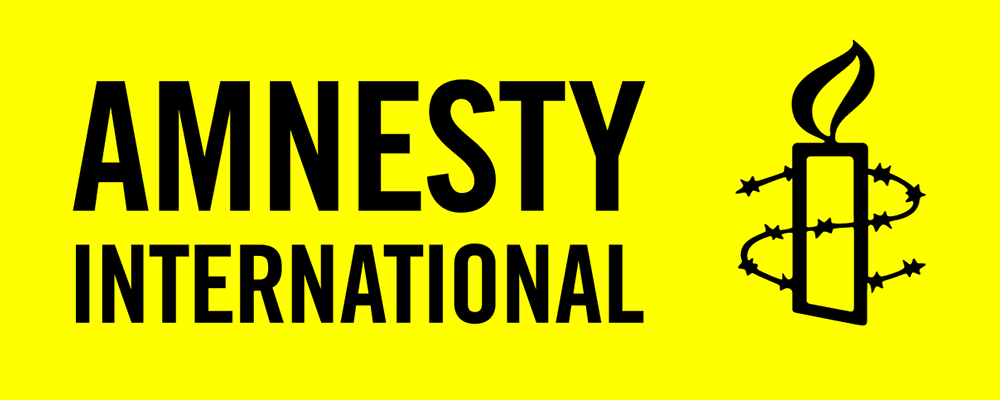Climate Action
Millions of people are already suffering from the catastrophic effects of extreme weather disasters exacerbated by climate change – from prolonged drought in sub-Saharan Africa to devastating tropical storms sweeping across Southeast Asia, the Caribbean and the Pacific. Scorching temperatures have caused deadly heatwaves in Europe and wildfires in South Korea, Algeria and Croatia. There has been severe flooding in Pakistan, while a prolonged and intense drought in Madagascar has left 1 million people with very limited access to adequate food.
The devastation that climate change is causing and will continue to cause means it is code red for humanity. But there is still time. The world’s leading scientific body for the assessment of climate change – the Intergovernmental Panel on Climate Change (IPCC) – warns that global greenhouse gas emissions must ‘peak before 2025 at the latest, and be reduced by 43 per cent by 2030 if we are to limit climate change to 1.5°C and avoid complete catastrophe.
Large-scale action is required immediately, but urgency must not be an excuse to violate human rights.
 The dramatic impacts of climate change have exposed with devastating clarity, how integral a healthy environment is to the enjoyment of all our other rights.
The dramatic impacts of climate change have exposed with devastating clarity, how integral a healthy environment is to the enjoyment of all our other rights.
Agnes Callamard, Amnesty International’s Secretary General
HOW DOES CLIMATE CHANGE IMPACT HUMAN RIGHTS?
Human rights are intimately linked with climate change because of its effect on not just the environment but our own wellbeing. Its effects will continue to grow and worsen over time, creating ruin for current and future generations. This is why the failure of governments to act on the climate crisis in the face of overwhelming scientific evidence may well be the biggest inter-generational human rights violation in history.
Climate change and right to life
We all have the right to life, and to live in freedom and safety. But climate change threatens the life and safety of billions of people on this planet. The most obvious example is through extreme weather-related events, such as storms, floods and wildfires. But there are many other less visible ways that climate change threatens lives. The World Health Organization predicts that climate change will cause 250,000 deaths per year between 2030 and 2050.
Climate change and right to health
We all have the right to enjoy the highest attainable standard of physical and mental health. According to the IPCC, major health impacts of climate change will include greater risk of injury, disease and death due to, among others, more intense heat waves and fires; increased risk of under-nutrition as a result of diminished food production in poor regions; and increased risks of diseases from food and water, and vector-borne diseases. People, and particularly children, exposed to traumatic events such as natural disasters, exacerbated by climate change, can suffer from post-traumatic stress disorders.
Climate change and right to housing
We all have a right to an adequate standard of living for ourselves and our families, including adequate housing. But climate change-related extreme weather events such as floods and wildfires are already destroying people’s homes, leaving them displaced. Drought can also lead to significant adverse changes in the environment while sea-level rises threaten the homes of millions of people around the world in low-lying territories.
Climate change and rights to water and to sanitation
We all have the right to safe water and to sanitation that ensures we stay healthy. But a combination of factors such as melting snow and ice, reduced rainfall, higher temperatures and rising sea levels show that climate change is affecting the quality and quantity of water resources. Already 785 million people do not have access to a source of water or sanitation that is likely to be safe. Climate change will make this worse.
Read our latest report on those most impacted by climate change.
WHO IS IMPACTED MOST BY CLIMATE CHANGE?
Climate change is and will continue to harm all of us unless governments take action. But its effects are likely to be much more pronounced for certain communities and groups, as well as those who are generally already disadvantaged and subject to discrimination. This includes, but is not limited to:
People in developing nations, especially coastal countries and small island states
At a national level, those in less wealthy countries, especially low-lying, small island states and less developed countries, will be and are already among those worst affected by climate change. Often it’s those who contribute the least to climate change that are most impacted. This is due not only to their exposure to climate-related disasters, but also to underlying political and socio-economic factors that amplify the impacts of those events. In particular, the lasting consequences of colonialism, and its legacy of unequal distribution of resources among countries, have reduced the ability of lower-income countries to adapt to the adverse effects of climate change. Pakistan, which has accounted for 0.4 per cent of historic emissions since 1959, is listed as one of the most climate vulnerable places in the world, according to joint findings by the World Bank and Asian Development Bank. The 2022 floods alone have caused at least 1,600 deaths and cost the country USD 10 billion.
Communities suffering from environmental racism
The effects of climate change and fossil fuel-related pollution also run along ethnicity lines when environmental policy-making discriminates against people of colour and other communities facing ethnic, religious and linguistic discrimination, or excludes them from leadership roles in the environmental movement. In North America, it is largely poorer communities of colour who are forced to breathe toxic air because their neighbourhoods are more likely to be situated next to power plants and refineries. They experience markedly higher rates of respiratory illnesses and cancers. African Americans are three times more likely to die of airborne pollution than the overall US population.
Marginalised women and girls
Women and girls are often confined to roles and jobs that make them more reliant on natural resources. Because they face barriers in accessing financial or technical resources or are denied land ownership, they are less able to adapt to climate change. This means that they are more at risk from the impacts of climate-related events as they are less able to protect themselves against it and will find it harder to recover.
Children
Children and young people are already suffering due to their specific metabolism, physiology and developmental needs. This means, for example, that the forced displacement experienced by communities impacting a whole range of rights – from water, sanitation and food to adequate housing, health, education and development – is likely to be particularly harmful to children.
WHAT IS CLIMATE JUSTICE?
Climate justice is a term used by civil society organizations and social movements to highlight the justice implications of the climate crisis and the need to design just policy responses.
Climate justice approaches focus on the root causes of the climate crisis and how climate change builds on and magnifies inequalities among countries and within countries. Its demands are based on the imperative of addressing such imbalances and injustices, starting from centering climate action in the perspectives, knowledge and demands of groups and communities most affected by the climate crisis.
Gender, racial, class, ethnic, disability and intergenerational justice are essential to truly achieving climate justice.
Holding states accountable
States have the obligation to avoid the worst impacts of climate change by taking the most ambitious measures to prevent or reduce greenhouse emissions in the fastest time possible. States must also take all necessary steps to help everyone within their jurisdiction to adapt to the current, foreseeable and unavoidable effects of climate change to minimize the impact on human rights. States must also provide effective remedies to people experiencing loss and damage.
The responsibility of wealthier states
Wealthy states must lead the way. They must decarbonize their economies more quickly than developing countries and provide sufficient financing and support to developing countries to allow them to meet ambitious emission reduction targets and implement effective climate change mitigation and adaptation measures. States most responsible for the climate crisis must also provide compensation and other forms of remedies – such as technology transfers and technical advice – for the loss and damages people have already suffered due to the climate crisis.
COP and The Paris Climate Agreement
In 1992, 165 nations signed an international treaty, the UN Framework Convention on Climate Change (UNFCCC). Annual meetings (called “Conference of the Parties” or COP) take place every year, with the aim of developing goals and methods to reduce climate change as well as adapt to its already visible effects. Today, 197 countries are bound by the UNFCCC. This year’s COP27 will be held in Egypt.
The Paris Climate Agreement, which was adopted by 196 states at COP21 in Paris, is the first legally binding international treaty on climate change. It has a goal to limit global warming to 2°C – or better still 1.5°C — and bring nations together to adapt to and mitigate its effects.
Holding corporations accountable
Research shows that just 100 fossil fuel-producing companies are responsible for 71 per cent of global greenhouse gas emissions since 1988. The global agro-industrial food system and the large scale plantations on which it depends, as well as mining projects, are often associated with high greenhouse gas emissions, deforestation and land degradation, as well as forced evictions of Indigenous peoples, attacks on environmental activists and other human rights violations.
Corporations, particularly fossil fuel companies and the financial institutions that often fund them, must immediately put measures in place to minimize greenhouse emissions, including by shifting their portfolio towards renewable energy produced in a manner compatible with human rights. They must make relevant information about their emissions and mitigation efforts public. These efforts must extend to all the major subsidiaries, affiliates and entities in their supply chain. Financial institutions must show leadership by ending the financing and insuring of fossil fuel projects. This includes expansions and new projects. Far too frequently, Indigenous peoples experience violence at the hands of state and private security forces as companies develop such projects. No financial institution should consider this an acceptable human rights risk.
Protecting and enabling environmental activists
It’s critical to support the work of those protecting land, food, communities and people against climate impacts, extraction and expansion of fossil fuels, deforestation and other activities that contribute to environmental degradation. Defending the civic space for information, participation and mobilization also contributes towards promoting more progressive and widely accepted climate measures and providing and enabling conditions for environmental defenders.
WHAT IS AMNESTY DOING TO ADDRESS CLIMATE CHANGE?
Given the urgency of the climate crisis, our role is to help galvanize the human rights community, by showing how climate change is impacting people’s rights and highlighting how people are mobilizing to respond to the reality and the threat of climate change.
Amnesty is working with a variety of different groups in key countries to mount pressure against governments and corporations that are obstructing progress. Amnesty is also supporting young people, Indigenous peoples, trade unions and affected communities. It demands a rapid and just transition to a zero-carbon economy that leaves no one behind.
OUR DEMANDS
Amnesty is calling for governments to:
- Do all they can to help stop the global temperature rising by more than 1.5°C.
- Collectively reduce their greenhouse gas emissions to absolute zero before or by 2050. Richer countries should do this faster. By 2030, global emissions must be half as much as they were in 2010.
- Stop using and producing fossil fuels (coal, oil and gas) as quickly as possible.
- Make sure that climate action is done in a way that does not violate human rights, and reduces rather than increases inequality.
- Make sure everyone, in particular those affected by climate change or the transition to a fossil-free economy, is properly informed about what is happening and is able to participate in decisions about their futures.
- Work together to fairly share the burden of climate change – richer countries must provide financial and technical support to people in developing countries to access renewable energy and adapt to climate change. They must also provide remedy, including compensation, to those who have suffered and will continue to suffer losses and damages caused by the climate crisis.
- Safeguard the rights of those displaced or at risk of displacement due to climate change.
For more detailed recommendations, see Stop burning our rights.

